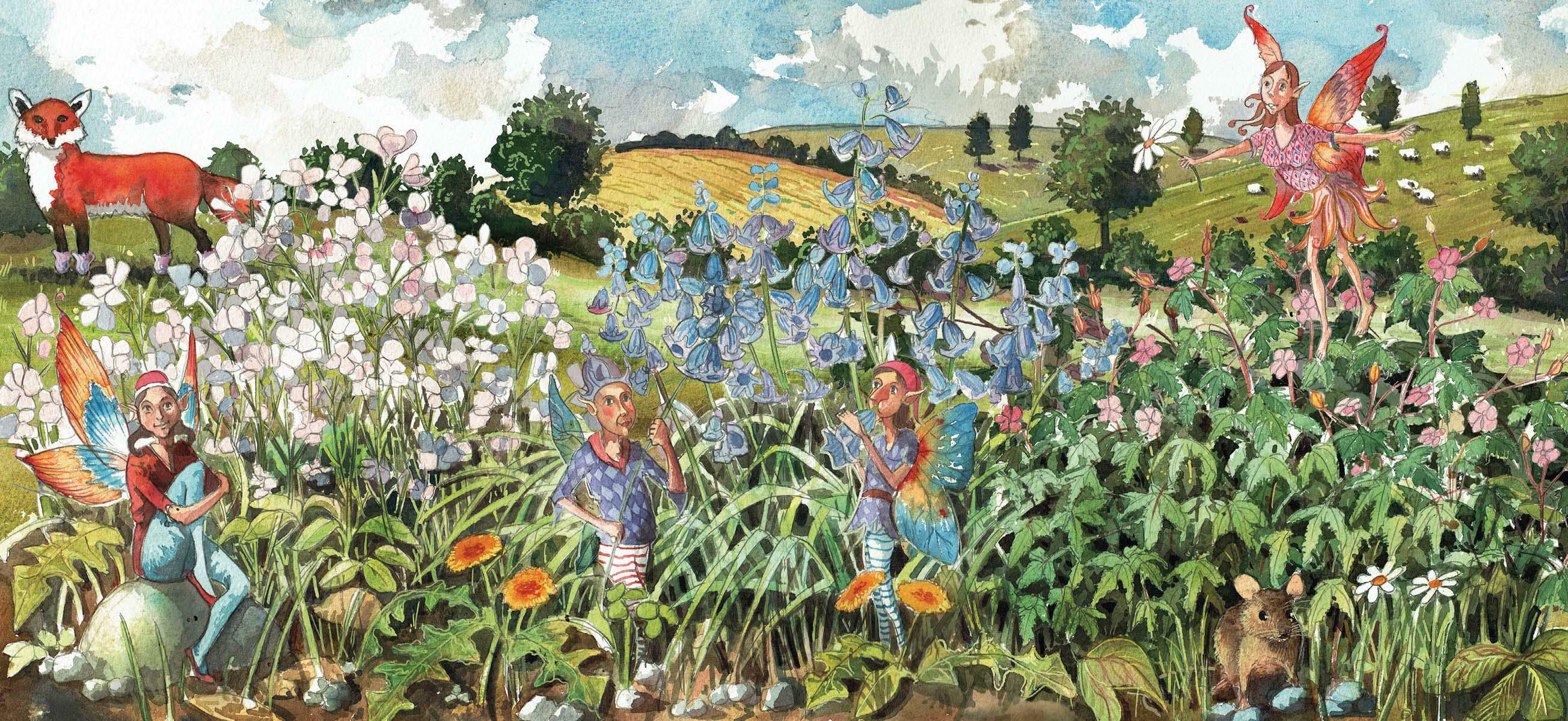The secret history of flowers

WHAT’S in a name? If that name is the old cognomen of a British wildflower, then it is the epigraph of the lore concerning the plant, the superstitions, traditions and knowledge linked to it over decades, centuries, millennia. Our wildflowers are deeply rooted in ancient myth and experience, their naming and their lore telling of their qualities —whether good or bad for human health, for example—but also, when we dig a little deeper, reflecting our own cultural history.
Pick a buttercup and play the childish game of holding it under someone’s chin to see the yellow sheen that betrays whether they like butter or not and you are enacting a relic belief of the West Country. There, long, long ago, farmers rubbed the udders of their cows with buttercup flowers on May Day, to increase the yield and richness of their milk. The ritual rubbing also protected the cattle from theft by faeries, who were always desirous of improving their herds of fairy cattle by interbreeding with cows from mortal fields.
The lore of the plants is a window into the mind of the past, even the far past, when spirits, elves and even the Devil were abroad. To cut foxgloves—or ‘fairy bells’ or ‘witches thimble’—for the prettification of the home was an offence against the fae people who lived in the flowers, inviting death. Conversely, for diabolical animals such as the fox, the bell-shaped flower, put on the paws, allowed it to prey on poultry in sorcerous silence.
Many of the earliest inhabitants of these isles, those of druid time, had no writing, left no record on stone or paper, but floral folklore is their memorial. To know the stories and legends of the wildflowers connects us with our forebears, but also with the plants, in a manner more profound today than merely studying their botany—or using their Latin, scientific names, which are invariably prosaic, based on the flora’s physical appearance.
Diese Geschichte stammt aus der August 07, 2024-Ausgabe von Country Life UK.
Starten Sie Ihre 7-tägige kostenlose Testversion von Magzter GOLD, um auf Tausende kuratierte Premium-Storys sowie über 9.500 Zeitschriften und Zeitungen zuzugreifen.
Bereits Abonnent ? Anmelden
Diese Geschichte stammt aus der August 07, 2024-Ausgabe von Country Life UK.
Starten Sie Ihre 7-tägige kostenlose Testversion von Magzter GOLD, um auf Tausende kuratierte Premium-Storys sowie über 9.500 Zeitschriften und Zeitungen zuzugreifen.
Bereits Abonnent? Anmelden

All in the family
Carlo Bugatti believed that any object could be a work of art, paving the way for his children, elegant Rembrandt and genial Ettore, to sculpt supple, predatory panthers and craft automotive masterpieces. Charles Harris traces their lives
Flushed with desire
\"Here they are, dissolving in laughter at his random predicament, the damsel and the dripping baronet

A famously good show
From tiny spots of the soft yellow buttercup to towering tree ferns from Co Kerry, SW3 was filled with interest large and small, finds Tiffany Daneff

Going a ganging
The ancient custom of 'beating' willow wands around parish perimeters is still performed today—minus the medieval brutality

Classic good looks
One of the most photographed stands at last week’s Chelsea Flower Show was COUNTRY LIFE’s ‘outdoor drawing room’, a tranquil Italianate loggia designed by Isabella Worsley
Kiss like a bee
MOST people who care about the countryside are deeply alive to the current plight of bees in Britain; the collapse in numbers is partly as a result of pesticide use, partly loss of habitat.

Treasures of the East
East Anglia appears to be full of wonders, from carriage driving and an escaped puma to a Harrods pavilion and ancient forests, as these houses show

Throwing caution to the wind
Spring is the time to see the muscular and noble goshawk, usually as elusive as a ghost circling and swooping through the sky

The age of calamity
IT'S now more than 60 years since the publication of May McKisack’s classic account of the 14th century, which appeared in the acclaimed ‘Oxford History of England’ series of volumes.

Wanderer above the Sea of Fog by Caspar David Friedrich
Charlotte Mullins comments on Wanderer above the Sea of Fog
